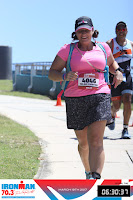We live in a society where it is easy to compare prices and expect to receive goods/services quickly. I recently upgraded my bike with pedals for power at the bargain price of about $1200. Yes, I could have saved a few hundred dollars by purchasing through the internet but I chose to shop at my local bike shop. I knew the shop would be installing the equipment and I trusted them to take care of my bike.
After a couple of months of frustration due to reliability of connection, I decided that I didn't want the pedals. I had visited the shop several times to trouble shoot battery power and connectivity so they were familiar with my concerns. Because we had worked together, we were able to find a solution that included an exchange of the pedals for a hub based power meter.
I have been a loyal customer of my Local Bike Shop, LBS, since I started in triathlon in 2008. I have purchased bikes, received tune ups, and attended group rides and sponsored events. I continue to return because I NEED them to keep my bike in working order. It's great to have a knowledgeable staff that is willing to listen to your issues, then work together to find a solution.
For those that purchase equipment and bikes then go to the LBS for fixes or warranty claims, shame on you. Why should the LBS show you loyalty and quick service when you didn't support them in the community? Bottom line. When you support your LBS, you will receive friendship, knowledge, service, and maybe even enjoy a small discount for your loyalty!
Thanks to Northwest Cyclery and Jim Osbon for being my LBS and bike gurus!!!









